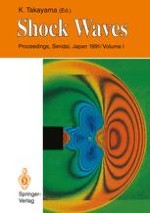1992 | OriginalPaper | Chapter
Effects of focused shock waves on biological tissues: Cavitation in the prefocal region and the fluid flow in the focal region
Authors : M. Kuwahara, N. Ioritani, T. Saito, S. Hoshi, S. Shirai, K. Taguchi, S. Orikasa, T. Obara, K. Takayama, S. Aida
Published in: Shock Waves
Publisher: Springer Berlin Heidelberg
Included in: Professional Book Archive
Activate our intelligent search to find suitable subject content or patents.
Select sections of text to find matching patents with Artificial Intelligence. powered by
Select sections of text to find additional relevant content using AI-assisted search. powered by
In order to elucidate the mechanism of shock wave injury in biological tissues, the mechanical damage of aluminum foils and the hyperechoic region, in the focal zone were studied. The shock waves were produced by a specially designed piezo-ceramic (overhead and water-bag type) generator. For focus localization an ultrasonic sector probe was used. On aluminum foils numerous pits were observed circumferentially around the central major deformity. The pits were formed not only in the focal region but also in the pre-focal region. The hyperechoic region, which appeared as a cloudy area on an ultrasound screen in the focal region, moved and disappeared after more than 5 sec. The numerical simulation indicated that the maximum flow speed reached 30 meter per second, and the direction of the flow was both axial and radial.The results indicate that, in addition to the tensile and compression stress, a cavitation phenomenon which induces pits and fluid flow in the focal region should also be considered in the mechanism of biological tissue injury caused by focused shock waves.
